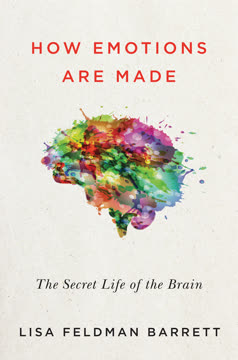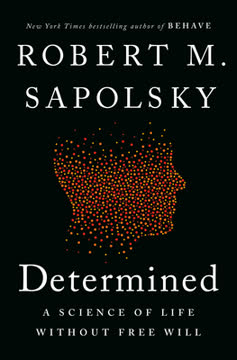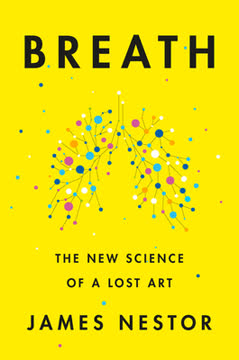Key Takeaways
1. The Evolution of Human Breathing: From Ancient Adaptations to Modern Challenges
"Ninety percent of us are breathing incorrectly, and this failure is either causing or aggravating a laundry list of chronic diseases."
Evolutionary mismatch. Human breathing has evolved over millions of years, but recent changes in our environment and lifestyle have led to widespread respiratory problems. Our ancestors' transition from a hunter-gatherer lifestyle to agricultural and industrial societies has had profound effects on our facial structure and breathing patterns.
Modern breathing issues. Today, many people suffer from chronic respiratory problems, including:
- Mouth breathing
- Sleep apnea
- Snoring
- Asthma
- Allergies
These issues are often exacerbated by factors such as:
- Processed food diets
- Sedentary lifestyles
- Air pollution
- Stress
Understanding the evolutionary context of human breathing is crucial for addressing these modern challenges and improving overall health.
2. Nasal Breathing: The Cornerstone of Optimal Respiratory Health
"The nose is the silent warrior: the gatekeeper of our bodies, pharmacist to our minds, and weather vane to our emotions."
Nasal breathing benefits. Breathing through the nose offers numerous advantages over mouth breathing:
- Filters, warms, and humidifies incoming air
- Produces nitric oxide, which improves blood flow and oxygen absorption
- Regulates breath rate and volume
- Improves sleep quality and reduces snoring
Nasal cycles. The nose undergoes natural cycles of congestion and decongestion, alternating between nostrils. This process is linked to the autonomic nervous system and affects various bodily functions, including:
- Body temperature regulation
- Blood pressure
- Heart rate
- Cognitive function
Practicing consistent nasal breathing can lead to improved overall health, better sleep, and enhanced athletic performance. Techniques such as mouth taping and conscious nasal breathing exercises can help retrain habitual mouth breathers.
3. The Power of Exhaling: Unlocking the Body's Natural Healing Mechanisms
"Exhalation is the key to breathing, lung expansion, and the long life that came with it."
Exhalation importance. The often-overlooked exhale phase of breathing plays a crucial role in:
- Stimulating the parasympathetic nervous system
- Improving circulation and lymphatic flow
- Enhancing diaphragm function
- Reducing stress and promoting relaxation
Carl Stough's work. Carl Stough, a choir conductor turned breathing expert, discovered the transformative power of full exhalations. His techniques helped:
- Emphysema patients improve their breathing capacity
- Olympic athletes enhance their performance
- Singers expand their vocal range and power
Practicing techniques that focus on complete exhalation, such as "Breathing Coordination," can lead to improved respiratory function, increased energy levels, and better overall health. These methods can be particularly beneficial for those with chronic respiratory conditions or athletes looking to optimize their performance.
4. Slow Breathing: The Key to Balancing the Autonomic Nervous System
"The optimum amount of air we should take in at rest per minute is 5.5 liters. The optimum breathing rate is about 5.5 breaths per minute. That's 5.5-second inhales and 5.5-second exhales. This is the perfect breath."
Autonomic balance. Slow breathing techniques help regulate the autonomic nervous system by:
- Activating the parasympathetic "rest and digest" response
- Reducing sympathetic "fight or flight" activity
- Improving heart rate variability
Resonant breathing. The ideal breathing rate of 5.5 breaths per minute, also known as resonant breathing, has been shown to:
- Reduce stress and anxiety
- Lower blood pressure
- Improve cognitive function
- Enhance emotional regulation
Practicing slow breathing exercises, such as box breathing or coherent breathing, for just a few minutes a day can lead to significant improvements in overall health and wellbeing. These techniques are particularly effective for managing stress, improving focus, and promoting better sleep quality.
5. Less is More: The Benefits of Controlled Underbreathing
"Breathing is an autonomic function we can consciously control. While we can't simply decide when to slow or speed up our heart or digestion, or to move blood from one organ to another, we can choose how and when to breathe."
Buteyko method. Developed by Dr. Konstantin Buteyko, this technique focuses on reducing breathing volume to increase carbon dioxide levels in the body. Benefits include:
- Improved asthma symptoms
- Reduced anxiety and panic attacks
- Enhanced athletic performance
- Better sleep quality
Hypoventilation training. Controlled underbreathing can lead to:
- Increased tolerance to CO2
- Improved oxygen utilization by tissues
- Enhanced endurance and stamina
Practicing controlled underbreathing techniques, such as the Buteyko method or hypoventilation training, can help improve overall respiratory function and alleviate symptoms of various respiratory conditions. However, it's important to approach these techniques gradually and under proper guidance to avoid potential adverse effects.
6. Chewing: The Forgotten Factor in Respiratory Health
"It was the constant stress of chewing that was lacking from our diets—not vitamin A, B, C, or D."
Facial development. The shift to soft, processed foods in modern diets has led to:
- Underdeveloped jaws and facial structures
- Crowded teeth and malocclusion
- Narrowed airways and increased risk of sleep apnea
Chewing benefits. Regular, vigorous chewing:
- Stimulates bone growth in the face and jaw
- Expands the palate and airways
- Improves overall oral health
- Enhances breathing capacity
Incorporating harder, more fibrous foods into the diet and consciously practicing longer chewing can help improve facial development and respiratory health. For those with existing issues, orthodontic devices like the Homeoblock can help expand the palate and improve breathing capacity.
7. Breathing+: Advanced Techniques for Stress Reduction and Performance Enhancement
"Breathing is not just a biochemical or physical act; it's more than just moving the diaphragm downward and sucking in air to feed hungry cells and remove wastes. The tens of billions of molecules we bring into our bodies with every breath also serve a more subtle, but equally important role."
Tummo breathing. This ancient Tibetan technique involves:
- Rapid, forceful breathing followed by breath retention
- Visualization of internal heat
- Potential benefits include improved cold tolerance and immune function
Holotropic Breathwork. Developed by Stanislav Grof, this method involves:
- Prolonged periods of rapid, deep breathing
- Altered states of consciousness
- Potential therapeutic benefits for mental health issues
Wim Hof Method. Combining breathing techniques with cold exposure, this approach claims to:
- Boost immune function
- Increase energy levels
- Improve stress resilience
These advanced breathing techniques offer potential benefits for stress reduction, performance enhancement, and overall health. However, they should be practiced under proper guidance and with caution, as they can lead to intense physiological and psychological experiences.
8. The Mind-Body Connection: Harnessing the Power of Breath for Mental Wellbeing
"Breathing is an autonomic function we can consciously control. While we can't simply decide when to slow or speed up our heart or digestion, or to move blood from one organ to another, we can choose how and when to breathe."
Breath-emotion link. Breathing patterns are closely tied to emotional states:
- Rapid, shallow breathing is associated with anxiety and stress
- Slow, deep breathing promotes relaxation and calmness
Therapeutic applications. Breath-based interventions have shown promise in treating:
- Anxiety disorders
- Depression
- PTSD
- Chronic pain
Practicing conscious breathing techniques can help regulate emotions, improve focus, and reduce symptoms of various mental health conditions. Integrating breathwork into daily routines, such as during meditation or yoga practice, can lead to significant improvements in overall mental wellbeing.
9. Carbon Dioxide: The Misunderstood Molecule Essential for Optimal Breathing
"Carbon dioxide is the chief hormone of the entire body; it is the only one that is produced by every tissue and that probably acts on every organ."
CO2 importance. Contrary to popular belief, carbon dioxide plays crucial roles in:
- Regulating blood pH
- Controlling breathing rate and depth
- Facilitating oxygen release to tissues (Bohr Effect)
Tolerance training. Increasing CO2 tolerance through breathing techniques can lead to:
- Improved respiratory efficiency
- Enhanced athletic performance
- Reduced symptoms of anxiety and panic disorders
Understanding the role of CO2 in breathing and overall health can help individuals optimize their breathing patterns and improve various aspects of their health. Techniques that focus on increasing CO2 tolerance, such as breath-holding exercises or the Buteyko method, can be particularly beneficial when practiced safely and consistently.
10. Ancient Wisdom Meets Modern Science: Rediscovering the Art of Breathing
"The human is not only an organism … it is also a mind whose strength used wisely can allow us to repair our body when it wobbles."
Historical practices. Ancient cultures recognized the importance of breath:
- Indian pranayama techniques
- Chinese qigong exercises
- Tibetan Tummo breathing
Scientific validation. Modern research is confirming the benefits of many ancient breathing practices:
- Improved heart rate variability
- Enhanced immune function
- Reduced inflammation
- Better stress management
By combining ancient wisdom with modern scientific understanding, we can develop more effective breathing techniques and interventions. This integration of traditional practices and contemporary research offers promising avenues for improving both physical and mental health through the power of breath.
Last updated:
FAQ
What's "Breath: The New Science of a Lost Art" about?
- Exploration of Breathing: The book delves into the science and history of breathing, exploring how modern humans have lost the art of proper breathing.
- Personal Experimentation: Author James Nestor conducts personal experiments to understand the impact of different breathing techniques on health and well-being.
- Historical and Cultural Insights: It examines ancient breathing practices from various cultures and how they can be applied today.
- Health Implications: The book discusses the health implications of poor breathing habits and offers solutions to improve respiratory health.
Why should I read "Breath: The New Science of a Lost Art"?
- Health Benefits: Understanding and improving your breathing can lead to better health, reduced stress, and increased longevity.
- Scientific Insights: The book provides scientific insights into how breathing affects every aspect of our physiology.
- Practical Techniques: It offers practical breathing techniques that can be easily incorporated into daily life for immediate benefits.
- Engaging Narrative: James Nestor combines personal anecdotes with scientific research, making the book both informative and engaging.
What are the key takeaways of "Breath: The New Science of a Lost Art"?
- Nasal Breathing Importance: Breathing through the nose is crucial for optimal health, as it filters, humidifies, and regulates airflow.
- Exhalation Focus: Proper exhalation is as important as inhalation, helping to expel toxins and improve lung function.
- Chewing and Facial Structure: The act of chewing affects facial structure and airway development, impacting breathing efficiency.
- Breathing Techniques: Various ancient and modern breathing techniques can improve health, reduce stress, and enhance physical performance.
How does James Nestor's personal experiment contribute to the book?
- Mouth vs. Nose Breathing: Nestor conducts a 20-day experiment comparing the effects of mouth breathing versus nasal breathing on his health.
- Health Metrics: He measures changes in blood pressure, heart rate, and other health metrics, demonstrating the negative impact of mouth breathing.
- Real-Life Application: The experiment provides real-life evidence supporting the book's claims about the benefits of nasal breathing.
- Engaging Storytelling: Nestor's personal journey adds a narrative element that makes the scientific content more relatable and engaging.
What are the best quotes from "Breath: The New Science of a Lost Art" and what do they mean?
- "Shut your mouth": This quote emphasizes the importance of nasal breathing over mouth breathing for better health.
- "The perfect breath is this: Breathe in for about 5.5 seconds, then exhale for 5.5 seconds": It highlights the ideal breathing pattern for optimal health and relaxation.
- "Breathing is a missing pillar of health": This suggests that proper breathing is as crucial as diet and exercise for maintaining health.
- "Nature is simple but subtle": It reflects the book's theme that simple changes in breathing can have profound health effects.
How does "Breath: The New Science of a Lost Art" address modern health issues?
- Chronic Conditions: The book links poor breathing habits to modern chronic conditions like asthma, sleep apnea, and anxiety.
- Preventative Approach: It advocates for using breathing techniques as a preventative measure to maintain health and prevent disease.
- Scientific Backing: The book provides scientific evidence and expert opinions to support its claims about the health benefits of proper breathing.
- Holistic Health: It promotes a holistic approach to health, integrating breathing with other lifestyle changes for overall well-being.
What is the significance of nasal breathing according to "Breath: The New Science of a Lost Art"?
- Air Filtration: Nasal breathing filters out particles and pathogens, reducing the risk of respiratory infections.
- Air Regulation: It regulates airflow, ensuring that the lungs receive the right amount of air for optimal function.
- Nitric Oxide Production: Breathing through the nose increases nitric oxide production, which improves circulation and oxygen delivery.
- Health Benefits: Nasal breathing is linked to better sleep, reduced stress, and improved cardiovascular health.
How does "Breath: The New Science of a Lost Art" explore ancient breathing techniques?
- Cultural Practices: The book examines ancient breathing practices from cultures like the Tibetans, Indians, and Chinese.
- Historical Context: It provides historical context for how these techniques were developed and their intended benefits.
- Modern Relevance: The book discusses how these ancient practices can be adapted for modern use to improve health.
- Scientific Validation: It explores scientific studies that validate the effectiveness of these ancient techniques.
What role does chewing play in breathing according to "Breath: The New Science of a Lost Art"?
- Facial Development: Chewing affects the development of facial bones and airways, impacting breathing efficiency.
- Dietary Changes: The shift to softer, processed foods has led to underdeveloped jaws and crowded teeth, contributing to breathing issues.
- Historical Evidence: The book presents evidence from ancient skulls showing wider jaws and better airway structures due to more chewing.
- Practical Advice: It suggests incorporating more chewing into daily life to improve facial structure and breathing.
What are the potential risks of mouth breathing as discussed in "Breath: The New Science of a Lost Art"?
- Health Deterioration: Chronic mouth breathing can lead to health issues like sleep apnea, high blood pressure, and dental problems.
- Increased Stress: It can increase stress hormones, leading to anxiety and fatigue.
- Reduced Oxygenation: Mouth breathing bypasses the nasal filtration system, reducing oxygenation efficiency.
- Long-Term Effects: Prolonged mouth breathing can lead to structural changes in the face and airways, worsening breathing problems.
How does "Breath: The New Science of a Lost Art" suggest improving breathing habits?
- Nasal Breathing: Prioritize breathing through the nose to improve filtration and oxygenation.
- Exhalation Techniques: Focus on full exhalations to expel toxins and improve lung function.
- Breathing Exercises: Practice specific breathing exercises like Coherent Breathing and Tummo to enhance respiratory health.
- Lifestyle Changes: Incorporate more chewing and maintain proper oral posture to support airway development.
What scientific evidence supports the claims in "Breath: The New Science of a Lost Art"?
- Clinical Studies: The book references clinical studies that demonstrate the health benefits of nasal breathing and proper exhalation.
- Expert Opinions: It includes insights from experts in pulmonology, dentistry, and anthropology to support its claims.
- Personal Experiments: Nestor's personal experiments provide real-life evidence of the impact of different breathing techniques.
- Historical Data: The book uses historical data and anthropological evidence to show the long-term effects of breathing habits on health.
Review Summary
Breath receives mostly positive reviews, with readers praising its insightful exploration of breathing techniques and their impact on health. Many find the book informative, life-changing, and well-researched, appreciating Nestor's personal journey and historical context. Readers report implementing the book's ideas to improve their breathing and overall well-being. Some criticize it for being pseudoscientific or overly simplistic. The book's practical advice, such as nose breathing and proper exhalation, resonates with many readers. Overall, it's seen as an eye-opening read that challenges common assumptions about breathing.
Similar Books






Download PDF
Download EPUB
.epub digital book format is ideal for reading ebooks on phones, tablets, and e-readers.





